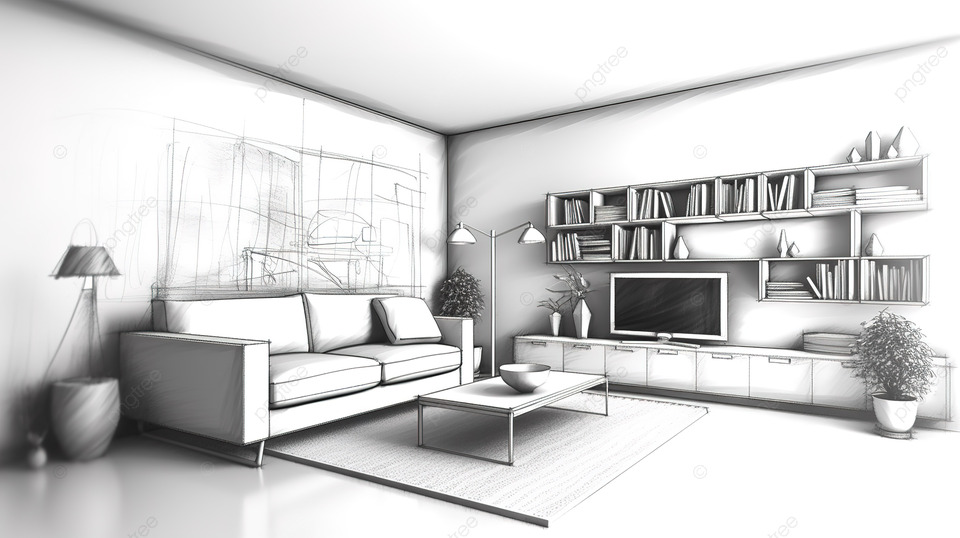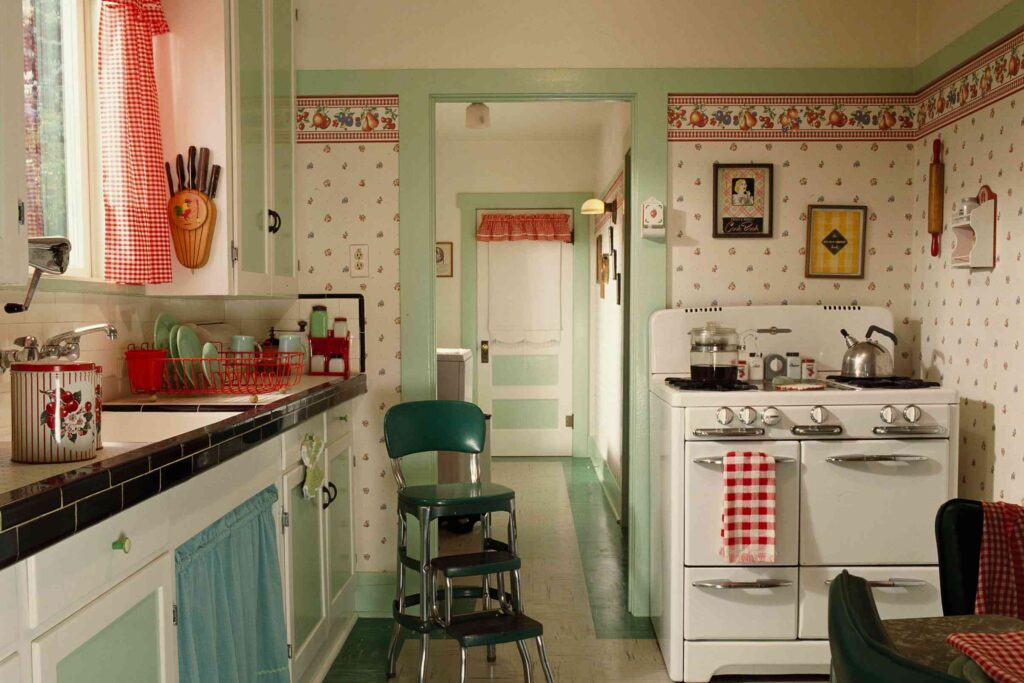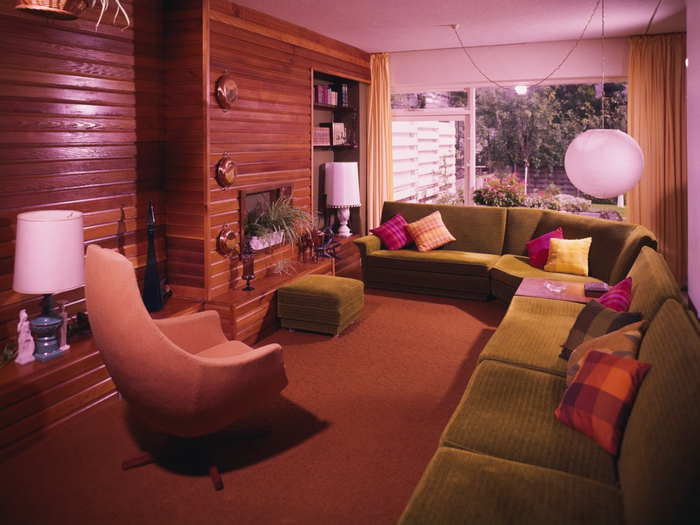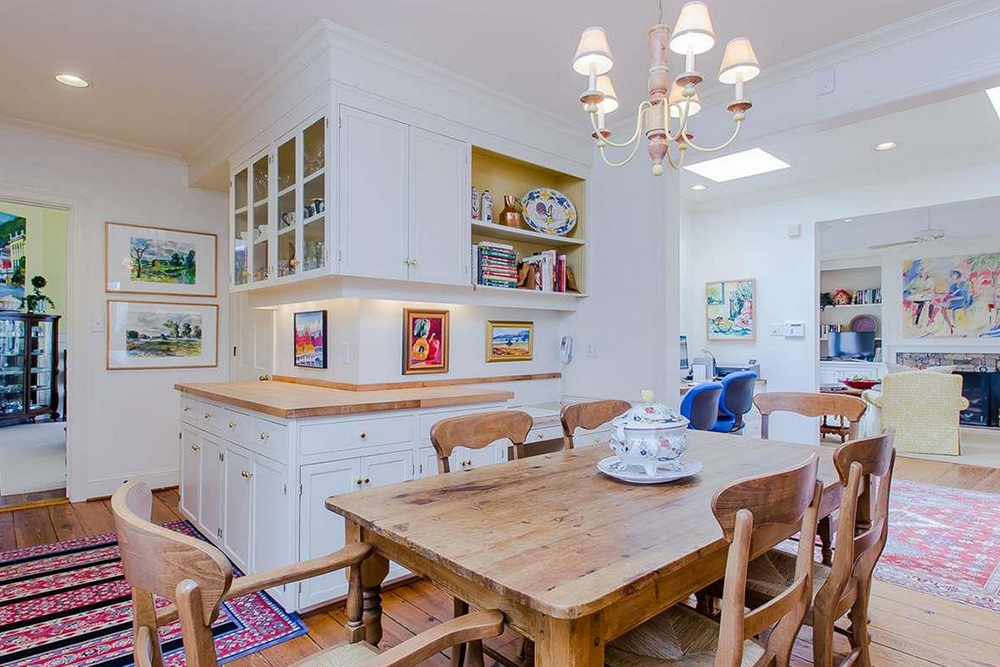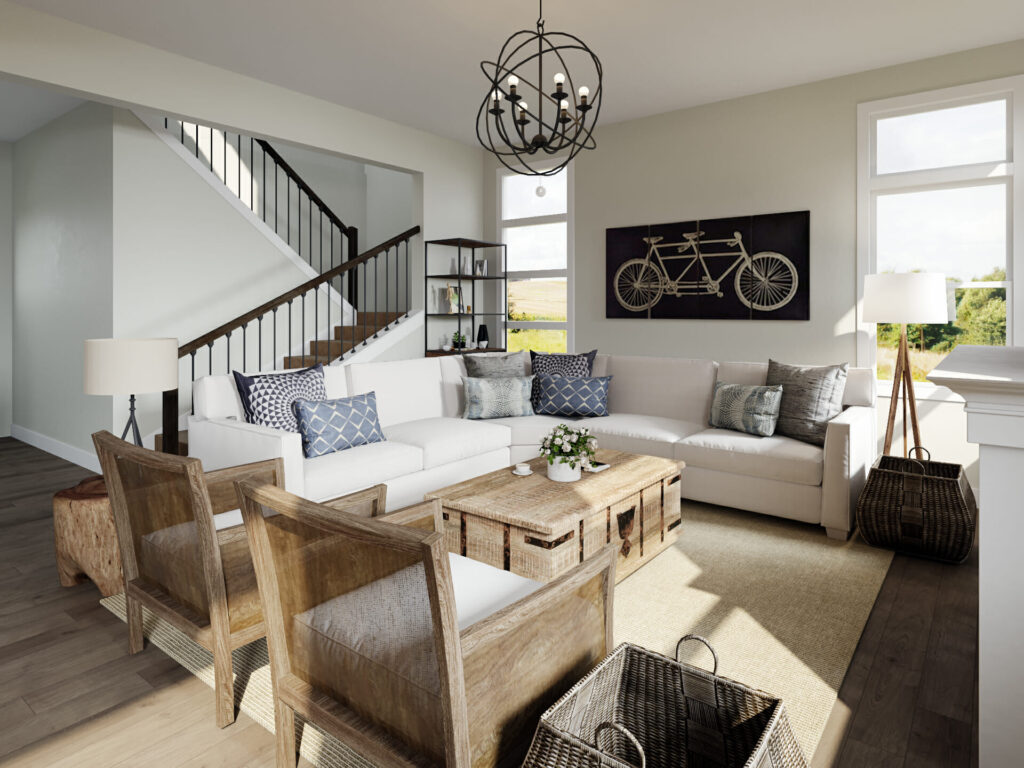The desire for an organized home isn’t a product of modern times. Throughout history, humans have sought ways to order their environments, influenced by societal norms, cultural shifts, and technological advancements.
This deep dive into the history of home organization in the USA will take you on a journey from the opulent Victorian era to the sleek minimalism of the 21st century.
The Victorian Era: Trunks, Cabinets, and Curios – A Timeless Inspiration
The Victorian era, spanning from the mid-1800s to the turn of the 20th century, was marked by its ornate designs, rich textures, and a pronounced inclination towards showcasing collections and wealth. Though times have evolved, the essence of Victorian organizing methods still holds relevance and can serve as inspiration for today’s homeowners.
Trunks and Chests: From Voyage Essentials to Home Staples
During the Victorian era, as global travel burgeoned, especially with the inauguration of railways, trunks transitioned from being merely voyage essentials to quintessential household items.
Functionality: Victorians utilized trunks not just for their travels, but they became primary storage solutions within homes, housing linens, clothing, and various personal items.
Modern Adaptation: Today, trunks can serve as stylish coffee tables, providing storage while acting as a statement piece in living rooms. They offer a vintage charm and can be ideal for storing blankets, board games, or seasonal decor. A well-restored or vintage-inspired trunk can serve as a conversation starter and blend seamlessly with both classic and contemporary interiors.
Cabinets of Curiosity: Chronicles of Exploration
The Victorian curiosity for global exploration led many to become avid collectors of artifacts and curiosities. This was an age where the world seemed to be opening up, and those fortunate enough to explore it wanted tangible memories of their journeys.
Showcasing the World: From rare shells to intricate sculptures, these souvenirs were proudly displayed in elaborate cabinets of curiosity. These cabinets, often floor-to-ceiling structures, were organized with meticulous care, turning artifacts into art displays, a testament to the homeowner’s travels and tastes.
Modern Adaptation: Drawing inspiration from this, modern homeowners can create dedicated display zones or feature walls to showcase their travels, hobbies, or collections. Floating shelves, shadow boxes, or glass-fronted cabinets can host an array of items, from souvenirs to vintage finds. To make this a functional and attractive display, ensure you curate items, maintain balance, and possibly have a central theme or color scheme to tie everything together.
The 1920s to 1940s: Function Over Frills – A Lesson in Practicality for Modern Homes
The era spanning the 1920s to the 1940s was marked by global upheaval and economic challenges. With the world grappling with two major wars and the devastating effects of the Great Depression, the design and organization of homes mirrored the times’ austerity and the need for adaptability.
Built-in Storage: The Birth of Integrated Spaces
During this era, as space became a premium and resources were scarce, the design of homes began to change, focusing on maximizing functionality.
Evolution of Design: The ornate and expansive furniture of previous decades gave way to built-in storage solutions. Homes started featuring built-in closets, cabinets, and cupboards, ensuring that every inch of the home was utilized efficiently.
Modern Adaptation: The principle of integrated storage remains relevant today, especially for urban dwellers or those living in smaller spaces. Modern homes can incorporate built-in wardrobes, under-stair storage, and multi-functional furniture. The idea is to create an organized space where everything has a designated place, reducing clutter and enhancing the living experience.
War Influence: Necessity is the Mother of Invention
The rationing and resource constraints imposed by the wars forced households to be inventive and prudent.
Preservation and Storage: With several products rationed, households had to be resourceful. This led to an increased emphasis on canning, preservation, and the efficient organization of pantries. Families would preserve fruits, vegetables, and meats, ensuring they had provisions during lean times.
Modern Adaptation: Today, while we aren’t facing the same kind of constraints, the idea of sustainable living and reducing waste is gaining traction. Modern households can embrace these practices by growing their own vegetables, canning seasonal produce, and organizing pantries to ensure longer shelf life for products. Additionally, buying in bulk and storing efficiently not only reduces packaging waste but can also lead to cost savings.
The 1920s to 1940s taught us that challenges can foster innovation and adaptability. While the aesthetics and exact methods might differ, the core principles of maximizing space and resourceful living continue to hold value. Incorporating these lessons can lead to a home that is not only organized and efficient but also mindful and sustainable.
The 1950s and 1960s: Consumerism and Kitsch – Balancing Novelty with Nostalgia
The period following World War II saw an economic resurgence, with industries booming and consumers eager to enjoy the newfound prosperity. This era, spanning the 1950s and 1960s, was marked by a burst of colors, innovative products, and a distinct flair for the flamboyant. Homes became the canvas on which this exuberance was painted, resulting in unique organizational and decorative trends.
Tupperware: The Plastic Revolution in Kitchen Organization
As society gravitated towards convenience and modernity, the humble kitchen experienced revolutionary changes.
Changing Dynamics: The introduction of Tupperware marked a significant shift in how households viewed food storage. Tupperware parties became the social events to attend, where homemakers would learn about these air-tight, durable, and attractive containers.
Modern Adaptation: Tupperware set the stage for the vast array of food storage solutions available today. Modern kitchens can take inspiration by investing in sustainable, airtight containers, be it glass, silicone, or eco-friendly plastics. The emphasis remains on ensuring food stays fresh longer, reducing waste, and optimizing kitchen space.
Kitsch Decor: Celebrating the Quirky and Colorful
The ’50s and ’60s saw a departure from conservative design norms. Bright colors, quirky designs, and a desire to showcase personality became the order of the day.
Showcasing Affluence and Travels: With an increase in global travel and consumerism, people amassed an array of decorative items. Open shelving, glass-fronted cabinets, and feature walls became popular as they allowed homeowners to showcase these collections, be it travel souvenirs, art pieces, or avant-garde decor.
Modern Adaptation: The kitsch design era resonates with today’s maximalist trend. Modern homes can embrace this by curating and displaying personal collections in a harmonious manner. While open shelving remains popular, the idea is to strike a balance, ensuring spaces don’t feel cluttered. Incorporating statement pieces, vibrant colors, or unique textures can pay homage to the kitsch era while aligning with contemporary aesthetics.
The 1950s and 1960s serve as a vibrant reminder of the possibilities that emerge when practicality meets creativity. While styles evolve and decades roll on, the essence of celebrating individuality, embracing innovation, and optimizing spaces with flair remains timeless. Whether you’re an enthusiast of retro charm or modern minimalism, there’s inspiration to be drawn from these colorful decades.
The 1970s to 1990s: Open Spaces and DIY Culture – The Rise of Personalization in Home Design
The closing decades of the 20th century marked a significant evolution in home design and organization. The influence of changing societal norms, technological advancements, and increased access to global trends resulted in a shift towards more open, personalized homes. A distinctive aspect of this era was the emergence and flourishing of the DIY culture, driven by an increased desire for self-expression and hands-on involvement in home design.
Open Floor Plans: Breathing Life into Homes
The architectural approach of the ’70s to ’90s leaned towards open, airy designs, moving away from the segmented rooms of previous decades.
Blurring Boundaries: With the removal of walls, homes began to feature spaces that flowed seamlessly into one another. Living rooms transitioned into dining areas, which in turn opened up to kitchens. This design facilitated better communication, increased natural light, and gave homes a spacious feel.
Modern Adaptation: Today’s homes, especially urban apartments and condos, continue to embrace open floor plans. The challenge and opportunity lie in delineating spaces without walls. Clever furniture placement, area rugs, or even open shelving units can serve as subtle partitions. Multi-functional furniture, like ottomans with storage or sofa beds, helps optimize these open spaces while providing flexibility.
DIY Organization: Embracing Creativity and Individuality
As media became more accessible, people were increasingly exposed to global design trends, sparking a desire to personalize their homes.
Rise of DIY: Television shows, magazines, and later, the internet, provided a wealth of inspiration and step-by-step guides. People began experimenting, building their own shelves, sewing their own curtains, or repurposing old furniture for new uses. This not only provided a sense of accomplishment but also allowed for customization based on personal preferences and needs.
Modern Adaptation: The DIY spirit remains strong in contemporary culture. Platforms like Pinterest or YouTube offer a plethora of ideas and tutorials. Modern homes can incorporate DIY elements, be it through hand-painted wall murals, custom-made furniture, or upcycled decor items. Additionally, the DIY approach aligns with sustainable living principles, as repurposing and upcycling reduce waste.
The 1970s to 1990s highlighted the immense possibilities that come with personal involvement in home design and organization. The lessons from this era emphasize the joy of creation, the significance of spaces that resonate with inhabitants, and the value of a home that evolves with its residents. As we seek inspiration for contemporary homes, these decades serve as a testament to the timeless allure of personalized, functional, and open living spaces.
The 21st Century: Minimalism and Digital Shifts – Embracing Clarity in a Connected World
The dawn of the 21st century ushered in not just technological innovations but also a profound shift in how people perceived their living spaces and possessions. Amid the rapid pace of modern life, there emerged a collective yearning for simplicity, mindfulness, and intentionality in both the physical and virtual realms of existence.
Minimalist Movement: The Pursuit of Less for More
As societies grappled with the overwhelming influx of consumer goods and choices, minimalism emerged as a counter-movement, emphasizing the quality of experiences over the quantity of possessions.
Origins and Influence: Drawing significant inspiration from Japanese aesthetics, particularly concepts like ‘Ma’ (negative space) and ‘Wabi-Sabi’ (imperfection’s beauty), minimalism championed a life with fewer, more meaningful belongings. It’s about understanding that less can indeed be more, creating spaces that breathe and resonate with tranquility.
Modern Adaptation: Today, minimalism can be seen in homes that feature neutral color palettes, streamlined furniture, and a conscious absence of clutter. But it’s more than just a design choice, it’s a lifestyle. Adopting a minimalist approach could involve decluttering possessions, curating collections, or even simplifying daily routines. It’s about fostering spaces and lives that prioritize intentionality, mindfulness, and genuine contentment.
Digital Organization: Navigating the Virtual Labyrinth
As the digital realm began to expand, our understanding of ‘clutter’ and ‘organization’ had to evolve to encompass both tangible and intangible spaces.
From Tangible to Virtual: With technological advancements, books transformed into e-books, photographs into digital galleries, and important documents into cloud-stored files. This shift significantly reduced physical clutter, but it also presented the challenge of organizing vast virtual landscapes.
Modern Adaptation: Today’s homes often feature digital hubs or workstations, equipped with tools and apps designed to streamline virtual organization. Concepts like digital detoxes, data backups, and cloud organization play pivotal roles. Tools like digital calendars, task managers, and decluttering apps like Dropbox or Google Drive have become integral to managing our increasingly digital lives.
The 21st century, with its blend of minimalism and digital shifts, underscores the importance of adaptability, intentionality, and mindfulness. As we stride further into this century, the lessons learned offer a compass to navigate both our physical homes and the expansive, interconnected virtual world. With clarity as our guiding principle, we can create spaces and lives that reflect true purpose and contentment.
The Wrap Up
The evolution of home organization offers fascinating insights into societal changes and cultural shifts over the years. While the tools and trends have evolved, the underlying desire for order, beauty, and functionality remains constant.
Looking for Modern Organization Solutions?
At Just Organized by Taya, we respect the rich history of home organization while offering solutions tailored to contemporary needs. From decluttering services to aesthetic arrangements, we’re here to transform your space. Call us at 832-271-7608 or contact us here for more information.
Whether you lean towards Victorian opulence, 60s kitsch, or modern minimalism, the key is to find an organizational style that resonates with you and serves your current lifestyle. Here’s to a beautifully ordered home that tells your unique story!
- Black Friday Survival Guide: Managing the Chaos of Boxes, Bags, and Hiding Spots - November 21, 2025
- Why Your Home Won’t Stay Organized (And How to Stop Sabotaging Yourself) - November 19, 2025
- Your Stress-Free Thanksgiving: The Ultimate Pro Organizer’s Food Shopping Guide - November 13, 2025

